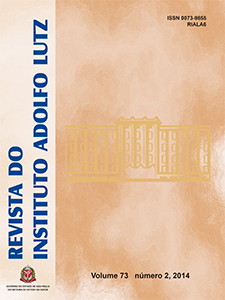Abstract
This study prepared formulations, and the sensory acceptability of soups containing sodium chloride (NaCl) salt substitutes was evaluated. In Step 1, seven samples containing NaCl (0 to 0.60 %) were formulated for determining the optimal concentration of salt. In Step 2, based on the result from Step 1, additional seven samples were prepared, containing salts chlorides, combined or separately: sodium chloride (NaCl), potassium (KCl), calcium (CaCl2) and magnesium chloride (MgCl2) in percentages from 0.25 to 0.50 %. In Step 3, the same salt concentrations added samples for Step 2 were used, but including 0.30 % of flavor enhancer monosodium glutamate (MG). In Step 1, the formulations containing 0.40 and 0.50 % NaCl showed the highest hedonic scores and, to a lesser acceptance was that salt-free (0 %) sample. In Step 2, the following chlorides addition 0.50 % (NaCl); 0.25 % (NaCl) + 0.25 % (KCl) and 0.25 % (NaCl) + 0.25 % (CaCl2) showed the highest acceptance. In Step 3, an overall increase in acceptance scores were observed; reduction in acceptance occurred from then on the addition of 0.50 % (KCl) + 0.30 % (MG). Thus, NaCl contents could be restricted in soups, particularly through the combined use of sodium and potassium or calcium chlorides, and it is feasible to use MG to improve the sensory acceptance.References
1. Gomes E. Importância dos minerais na dieta. 2008 [acesso 2014 Jun 20]. Disponível em: [http://www.atribunamt.com.br/2008/11/a-importancia-dos-minerais-na-dieta/].
2. Guàrdia MD. Consumer attitude towards sodium reduction in meat products and acceptability of fermented sausages with reduced sodium content. Meat Sci.2006;73(3):484-90.
3. Sociedade Brasileira de Cardiologia – Departamento de Hipertensão Arterial. Consensos e Diretrizes. 2011 [acesso 2014 jun 20]. Disponível em: [http://departamentos.cardiol.br/dha/consenso3/tratamento.asp].
4. Lawrence G, Salles C, Septier C, Busch J, Thomas-Danguin T. Oudor-taste interactions: A way to enchance saltines in low-salt content solutions. Food Qual Prefer.2009;20(3):241-48.
5. Nascimento R, Campagnol PCB, Monteiro ES, Pollonio MAR. Replacement of sodium chloride by potassium chloride influence on sausage’s physical-chemical and sensorial characteristics. Alim Nutr.2007;18(3):297-302.
6. Barbosa RG, Emanuelli T, Terra NN. Fabricação de salame tipo hamburguês com substituição parcial de sódio. [dissertação de mestrado]. Santa Maria (RS): Universidade Federal de Santa Maria; 2009.
7. Rech RA. Produçãode salame tipo italiano com teor de sódio reduzido. [dissertação de mestrado]. Santa Maria (RS): Universidade Federal de Santa Maria; 2010.
8. McGough MM, Sato T, Rankin SA, Sindelar JJ. Reducing sodium levels in frankfurters using a natural flavor enhancer. Meat Sci.2012; 91(2):185-94.
9. Karppanen H, Mervaala E. Sodium intake and hypertension. ProgCardDis.2006;49(2):59-75.
10. Pompeu FR. Tratamento não-farmacológico da hipertensão arterial. Departamento de Clínica Médica da Faculdade de Medicina da UFMG 2010. [acesso 2014 jun 20]. Disponível em: [http://www.medicina.ufmg.br/edump/clm/imphipert].
11. World Health Organization (WHO). Review and updating of current WHO recommendations on salt/sodium and potassium consumption. Geneva: WHO; 2011. 8p.
12. Barboza LMV, Freitas RJS, Waszczynskyj N. Desenvolvimento de produtos e análise sensorial. Bras Alim.2003;(18):34-5.
13. Jinap S, Hajeb P. Glutamate. Its applications in food and contribution to health. Appetite.2010;55(1):1-10.
14. Dutcosky SD. Análise sensorial de alimentos. 3 ed. Curitiba: Champagnat, 2011. 246p.
15. Reis AT, Toscano MM, Meister MC. Sal em sopas. Segur Qual Alim.2008;3(4): 54-5.
16. Carvalho PRRM, Bolognesi VJ, Barreira SMW, Garcia CER. Características e segurança do glutamato monossódico como aditivo alimentar: artigo de revisão. Visão Acad.2011;12(1):53-64.
17. Teixeira E, Meinert E, Barbetta PA. Análise sensorial dos Alimentos. Florianópolis: Editora da Universidade Federal de Santa Catarina; 1987. 180 p.

This work is licensed under a Creative Commons Attribution 4.0 International License.
Copyright (c) 2015 Instituto Adolfo Lutz Journal
